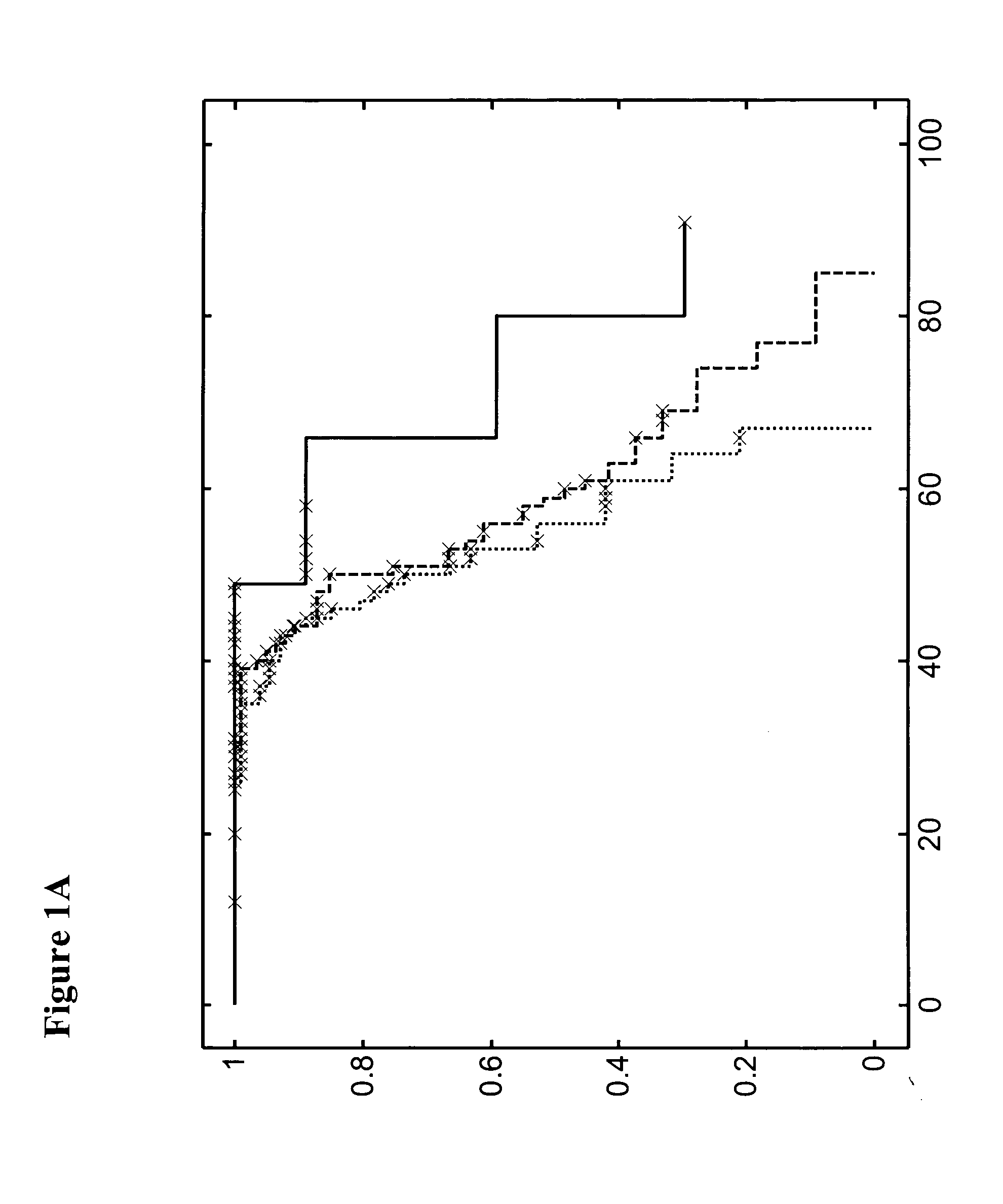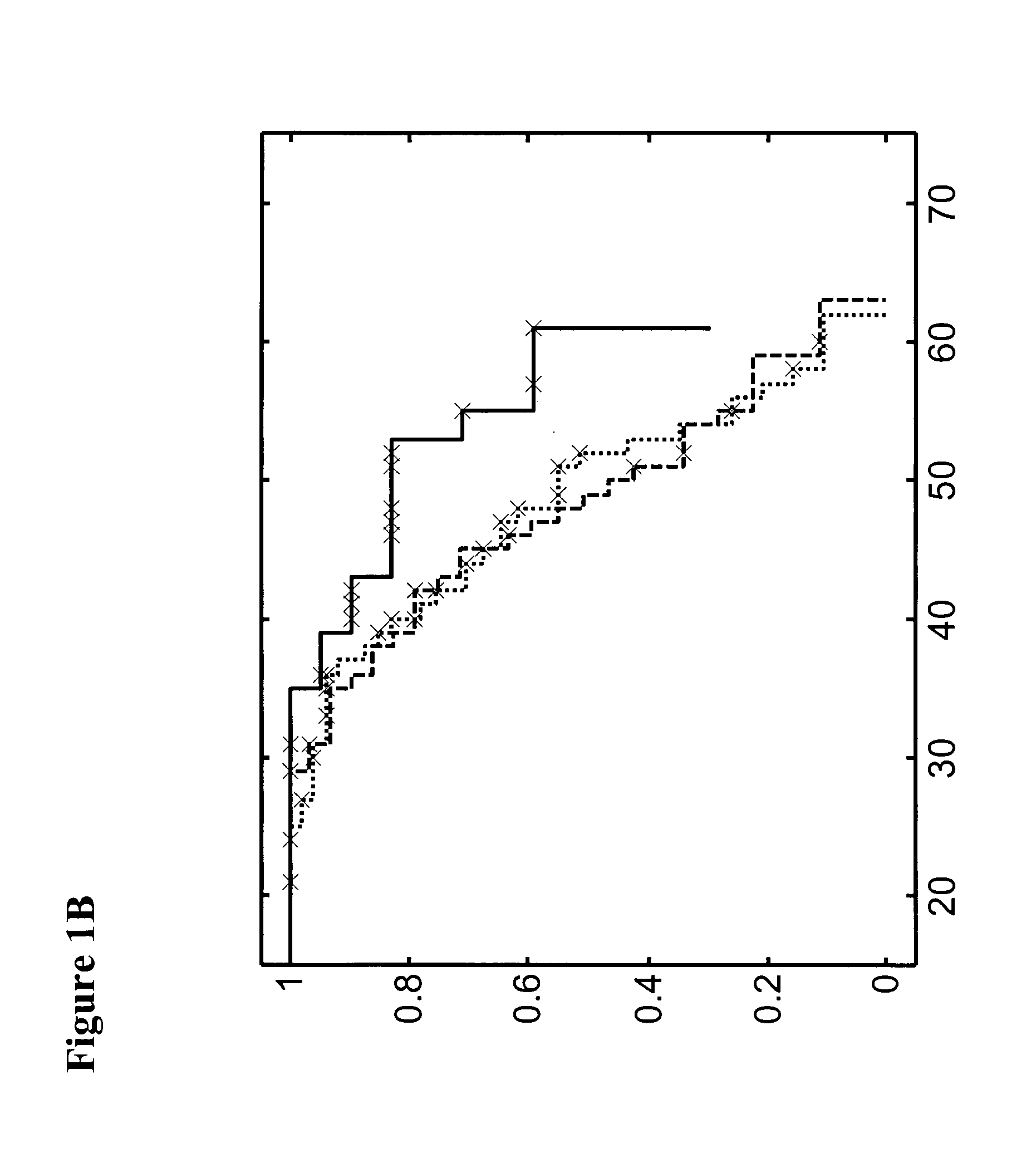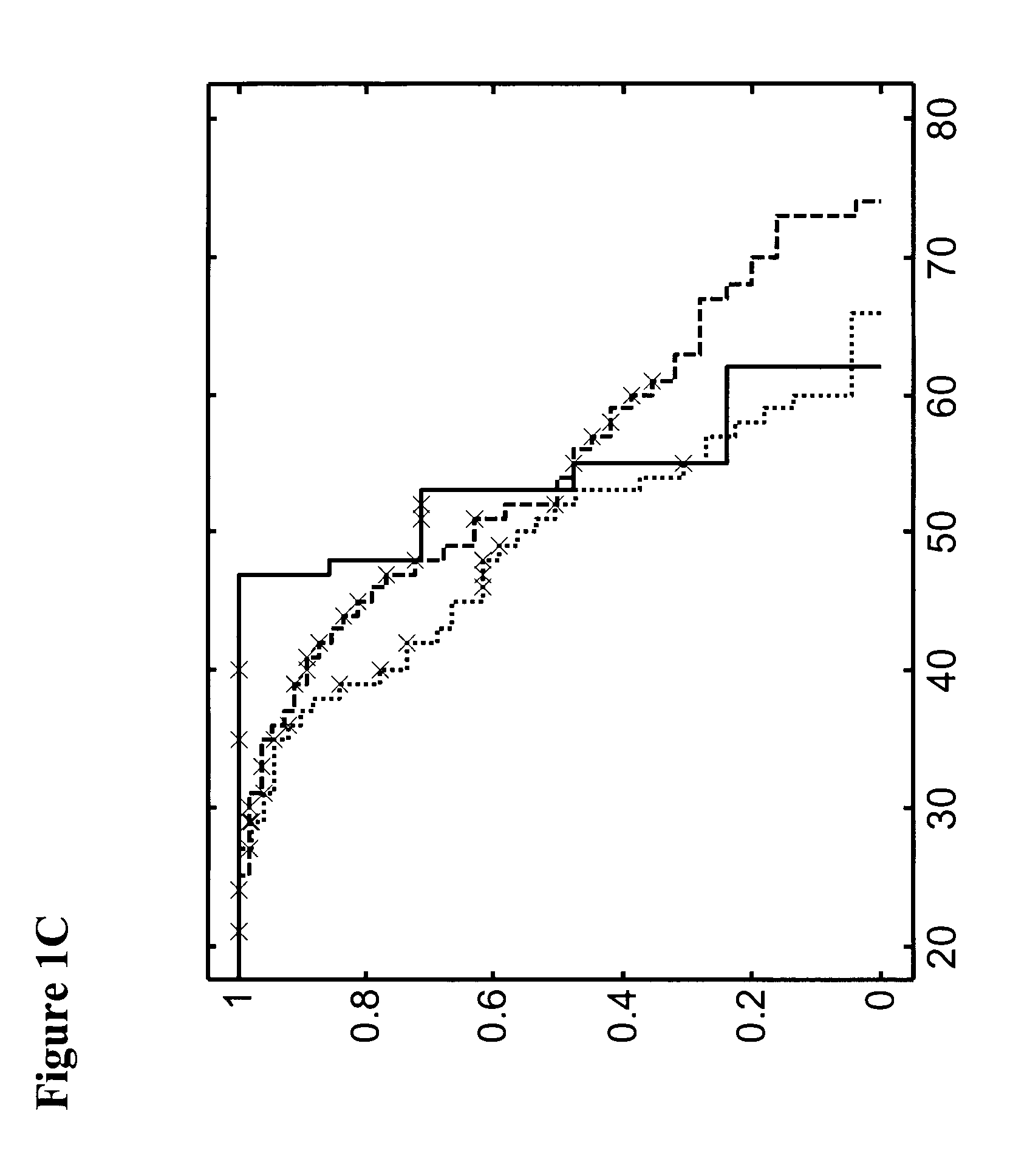Methods for detecting an increased susceptibility to cancer
a breast and ovarian cancer and susceptibility detection technology, applied in the direction of microbiological testing/measurement, sugar derivatives, biochemistry apparatus and processes, etc., can solve the problems of deregulation of target gene expression and the increase of breast cancer risk with age, so as to reduce increase the risk of breast cancer
- Summary
- Abstract
- Description
- Claims
- Application Information
AI Technical Summary
Benefits of technology
Problems solved by technology
Method used
Image
Examples
example 1
Study Population
[0148]The study population was recruited from among Jewish individuals counseled and tested at the Oncogenetics Unit, Sheba Medical Center since Jan. 1, 2000, and from an ongoing study targeting all consecutive breast cancer patients diagnosed and treated at the Sheba Medical Center from 2002 onwards. All participants recruited from the Oncogenetics Unit were high-risk individuals based on well-practiced criteria (Lynch et al., Cancer Genet Cytogenet 1999; 109:91-98), and all study participants were unrelated to each other (i.e., only one patient per family was included). DNA and relevant clinical demographic and pathological data were already available from these individuals and the study was approved by the IRB. Eligible women were genotyped and found to harbor one of the predominant mutations in Jewish Israeli women in either BRCA1 or BRCA2.
[0149]The research described herein below in Examples 2-5 encompassed the following subsets of participants, as presented in ...
example 2
SNP Selection
[0153]The following SNPs in sixty-six genes related to the BRCA1 / BRCA2 pathway were selected for genotyping using a bioinformatics approach:[0154]SNPs within predicted miR binding sites on transcripts of genes that are known to be expressed in breast cancer tissues / cell lines according to publicly available data or unpublished microarray data from Rosetta Genomics, and on transcripts of critical genes in cancer development. The prediction was based on complementarity between the “seed” of the miRNA and the corresponding sequence on the 3′ UTR part of a transcript of a target gene, and in most cases, the SNP was located in the seed-corresponding sequence on the 3′ UTR.[0155]SNPs within hairpins (precursors) of miRs known to be expressed in breast cancer.
[0156]The forty-two selected SNPs, from the dbSNP database version 125 of NCBI, are presented in Tables 2a and 2b. Their genomic positions are in accordance with the UCSC genome browser of the human genome release hg17 (w...
example 3
Genotyping using the Sequenom iPLEX™ Assay
[0157]SEQUENOM®'s (La-Jolla, Calif.) iPLEX™ assay for SNP genotyping allows performing 24-plex reactions on MassARRAY® System. PCR primers were designed in a region of approximately 100 base pairs around the SNP of interest for the first PCR reaction and an extension primer was designed immediately adjacent to the SNP for the second step of extension PCR during which addition of one base, according to the SNP, occurs.
[0158]The assay design was performed in a highly automated fashion by the AssayDesigner Software module. Each pattern of each SNP (homozygous to either allele and heterozygote) was sequenced in 2-3 samples. The starting point of the iPLEX assay was PCR amplification, followed by the addition of shrimp alkaline phosphatase (SAP) to inactivate remaining nucleotides in the reaction. Following brief incubation, the primer extension mixture was added and conducted using a standardized cycling program. Finally, CleanResin was added to...
PUM
| Property | Measurement | Unit |
|---|---|---|
| thermal melting point | aaaaa | aaaaa |
| temperature | aaaaa | aaaaa |
| temperature | aaaaa | aaaaa |
Abstract
Description
Claims
Application Information
 Login to View More
Login to View More - R&D
- Intellectual Property
- Life Sciences
- Materials
- Tech Scout
- Unparalleled Data Quality
- Higher Quality Content
- 60% Fewer Hallucinations
Browse by: Latest US Patents, China's latest patents, Technical Efficacy Thesaurus, Application Domain, Technology Topic, Popular Technical Reports.
© 2025 PatSnap. All rights reserved.Legal|Privacy policy|Modern Slavery Act Transparency Statement|Sitemap|About US| Contact US: help@patsnap.com



